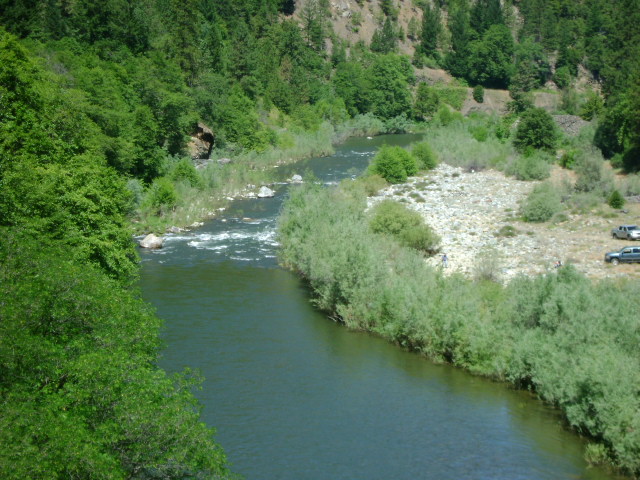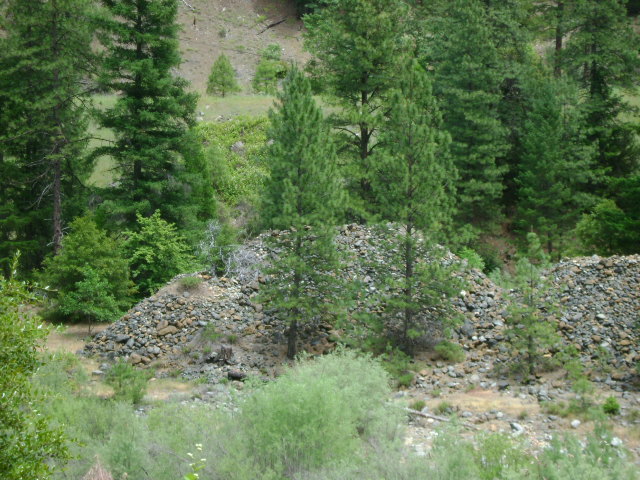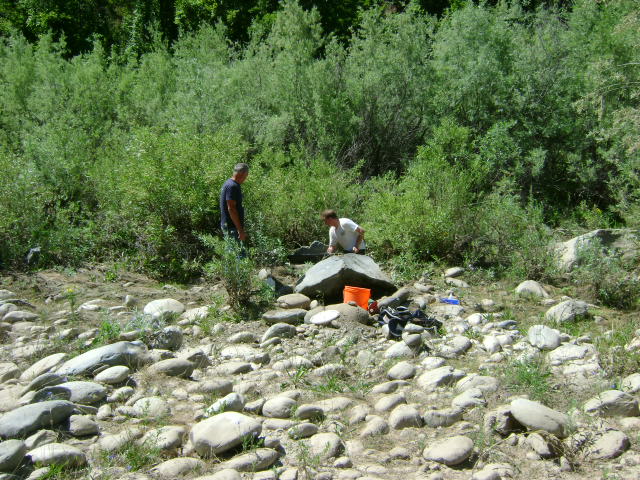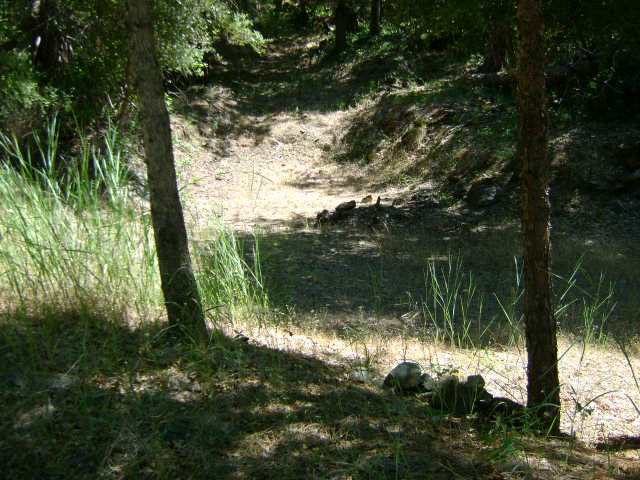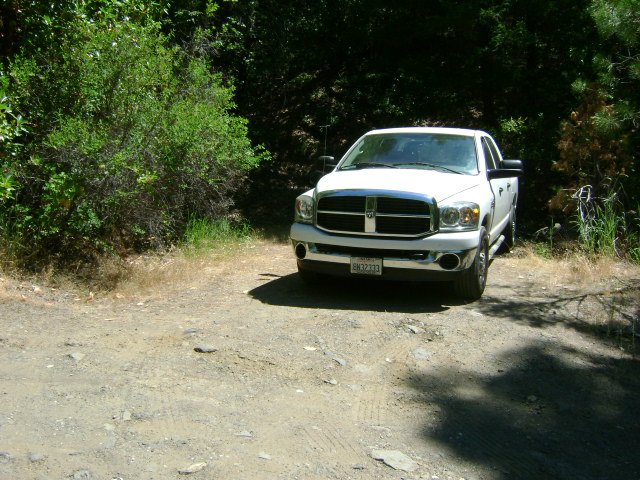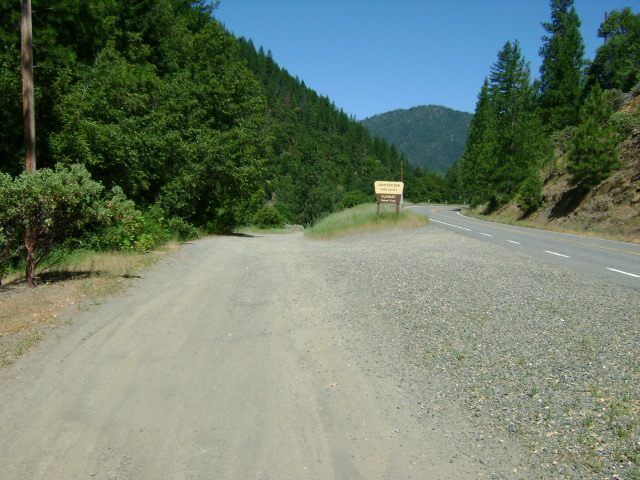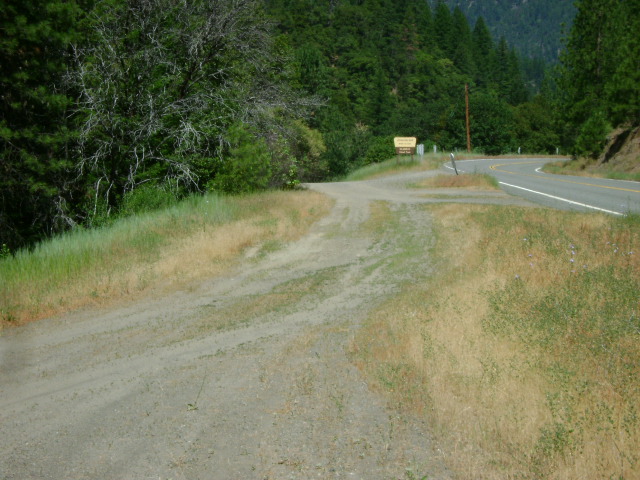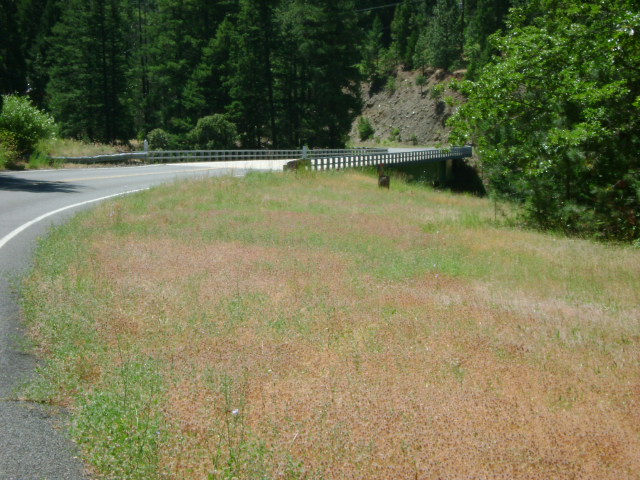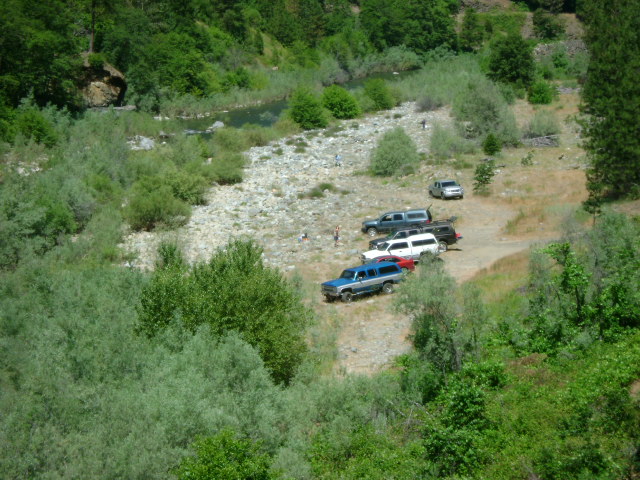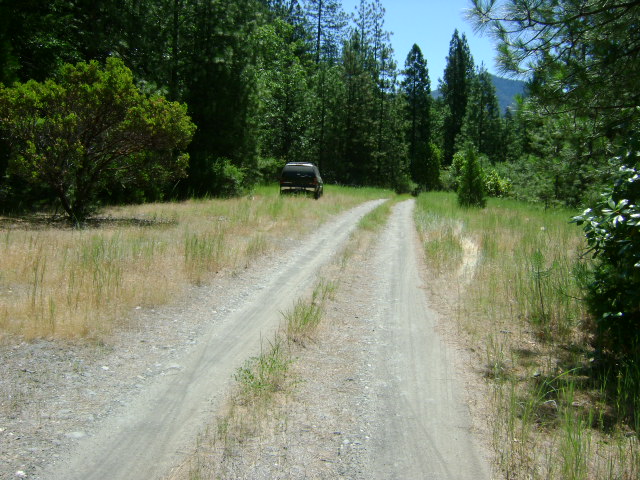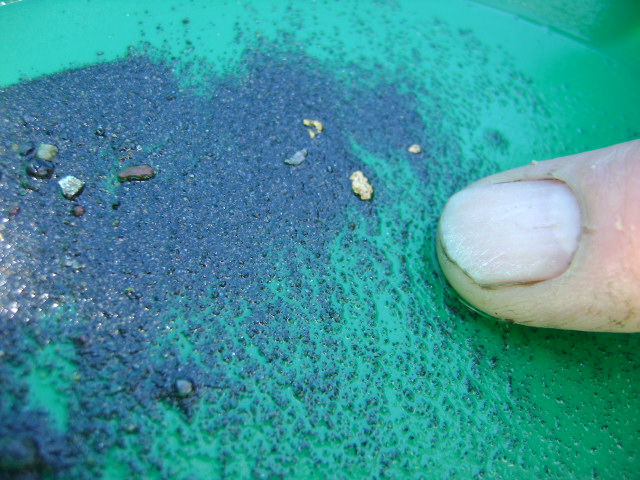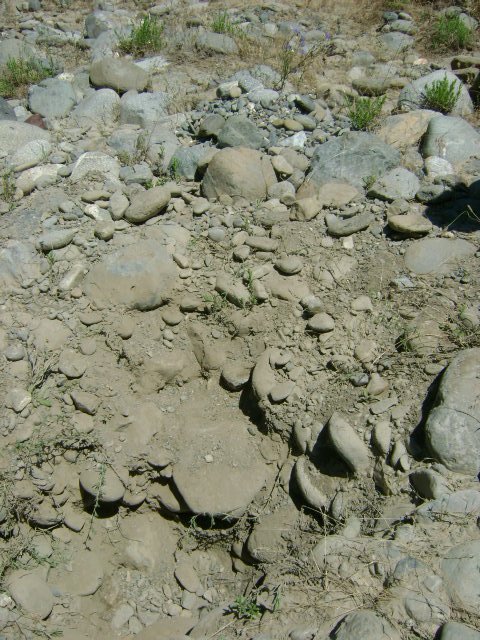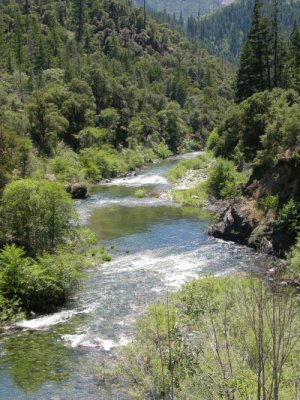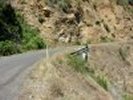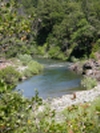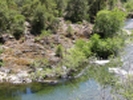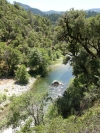By Michael Burnside, June 17, 2005
In 1897, Congress passed the Organic Act, which established the National Forest System and the purposes for which it would be managed. In regard to mining, the 1897 Act said that while the Forest Service couldn’t prohibit activities reasonably incidental to mining under the 1872 General Mining Law, the Forest Service was authorized to create reasonable rules to regulate the adverse effects of mining activities on the National Forests, and miners had to comply with those rules. In 1974, the Forest Service finally wrote those regulations. Since 1974 was the first attempt at rule making to oversee the surface effects of mining, the rules had imperfections and there were concerns over the years about their interpretation and application. But the Forest Service was largely consistent in how it interpreted them and in the manual direction it issued to apply its 36 CFR 228A regulations to minimize adverse environmental impacts from mining activities. In short, the Forest Service logically focused on the likely impacts of proposed mining activities, and required miners to submit plans of operations for all activities which would likely cause significant surface disturbance, regardless whether those activities involved mechanized earth moving equipment or the cutting of trees.
Activities which do not necessarily involve mechanized earth moving equipment or the cutting of trees could include construction of ore processing mills and mill sites; residential construction and occupancy; major hand excavation of holes, trenches, and pits in stream areas; road and bridge construction; disposal of mine tailings and other wastes; signing and fencing to restrict public use; diversion of water; and use of sluice boxes; storage of vehicles; and off highway vehicle use. While none of these activities may involve mechanized earth moving equipment or cutting of trees, they obviously could cause significant surface disturbance. Inability of the Forest Service to regulate such activities could result in significant impacts to NFS lands and resources and would violate the stated purpose of the 36 CFR 228A regulations to minimize adverse effects from mining. Numerous court decisions over the years, including 1981 US v. Weiss; 1989 U.S. v. Doremus; 1986 U.S. v. Brunskill; and 1990 U.S. v. Burnett; had upheld the Forest Service’s authority to apply its regulations in this manner and for this purpose.
In 2003, the judge who issued the Lex decision focused on the wording in one section of the Forest Service’s 1974 regulations and interpreted it in a manner that was directly contrary to how the Forest Service had been historically interpreting its regulation. In summary, the Judge said that based on the words the Forest Service had used in its regulations in 1974, it could not regulate operations which do not involve the use of mechanized earth moving equipment, such as bulldozers and backhoes, or cutting of trees.
As indicated previously, if this 2003 judicial interpretation of the 1974 rule had been allowed to stand, it would have overridden other language in 36 CFR Part 228 Subpart A which required miners to file a plan of operations for significant surface disturbing activities. The Lex court’s interpretation of the Forest Service’s rules conceivably could have allowed construction and operation of mills; deposition of tailings and mine waste; construction and occupation of residencies and buildings; and a long list of other examples, all without Forest Service oversight or bonding. The effect of such a broad exemption would have been contrary to Forest Service statutory authority and obligation to regulate mining on National Forests, and almost certainly would have caused a major adverse public reaction to such unregulated mining activities on public lands.
The judge who wrote the Lex decision was sympathetic with the dilemma his decision placed upon the Forest Service. The court referenced the Forest Service’s continuing authority to write regulations, and suggested that the Forest Service modify the 36 CFR 228 A regulations to fix the situation. Rather than appeal the Lex decision, which was indeed an option, the Forest Service believed the better long term solution was to do as the judge suggested and revise its regulation, which resulted in this final rule. The Forest Service used this situation as an opportunity to clarify its rules and address issues raised in the extensive public comment on the rule.
The June 6, 2005, Federal Register notice with the new rule at 36 CFR 228.4(a) and its Preamble contains several things that miners in general and small operators in particular should take note of:
1.) The Rule has been reorganized to make it flow more logically and to parallel the progression of activities from low impact or no impact to those requiring a plan of operations.
2.) The Preamble acknowledges that there is some confusion about how these regulations apply to “recreational miners”, and that some opponents to suction dredging assert that recreational mining is not legal under the mining law. The Forest Service makes it clear in the Preamble that it does not matter how operations are described, whether as recreational or commercial. As long as the operations are all reasonably incidental to mining, the same rules apply to all miners.
3.) Some members of the public have argued that a plan of operations should be required for any suction dredging operations and some miners have argued that suction dredging should be exempt from a Notice of Intent or a Plan of Operations. The Preamble explains that a “one size fits all” determination cannot be applied to suction dredging, and it must be made on a site-specific basis because of the great variability in circumstances and resource sensitivities on National Forests. Therefore it is possible that in some settings, a suction dredge operation may be exempt (perhaps under 228.4(1)(vi)) from needing a notice of intent or plan of operations and other circumstances where a Plan would be necessary if the operation would likely cause a significant surface disturbance.
4.) The new rule does not change bonding or other enforcement provisions available to the Forest Service against miners. Those remain the same as they have always been.
5.) The Preamble explains these regulations do not preclude or conflict with California State suction dredging permits, and that the state and federal permitting can and should be read together.
6.) The Forest Service has committed in the Preamble to train Forest Service mineral administrators to insure consistent interpretation and application of this new rule. In addition, the Chief of the Forest Service issued separate guidance in November 2004 that all mineral administrators must become trained and certified in the application of these regulations.
7.) The Preamble clarifies that the term “significant” as used in 36 CFR 228A is NOT used in the same way as under the National Environmental Policy Act (NEPA). The Preamble also explains the standard for determining significance under 36 CFR 228A. Any District Ranger’s decision that a proposal “…will likely cause significant disturbance of surface resources…” must be (1.) demonstrably based on past experience, direct evidence, or sound scientific projection; that would (2.) lead the District Ranger to reasonably expect the proposed operation to result in impacts to National Forest System lands that would need to be avoided or mitigated by reclamation, bonding, timing restrictions, or other measures to minimize adverse effects.
8.) The Preamble explains that stream beds in National Forests which have been adjudicated and determined to be navigable when the particular State entered the Union are exempt from Forest Service regulations. All others are subject to Forest Service regulation. Forest Service Regional Offices or the appropriate states should be able to provide a list of those streams.
9.) The Preamble explains that in spite of the original wording in the 1974 rule stating a Notice of Intent must be filed for any disturbance, careful research of the record for the 1974 rule revealed there was never any intent to require Notices of Intent for all activities which might cause a disturbance. The original intent was to require a Notice of Intent for only those operations which might (but are not likely to) cause SIGNIFICANT disturbance to surface resources and thus might require the filing of a Plan of Operations. Therefore, this final rule was changed to include the word “significant” in the context of requiring a Notice of Intent. Only operations; which might cause significant disturbance now require the filing of a Notice of Intent.
The Preamble also emphasizes that a Notice of Intent is not a regulatory instrument, permit, or “mini-plan”. A Notice of Intent is simply a notice the operator provides to the Forest Service to alert them and to help the process along, since it is in both their interests to do so.
10.) The Preamble clarifies that the trigger for a Notice of Intent is an operator’s reasonable uncertainty as to the significance of the disturbance the proposed operations will cause on National Forest System resources. If an operator reasonably concludes operations will not cause significant disturbance of NFS resources, the operator is not required to submit an NOI or POO.
The District Ranger may disagree with this and require a Plan of Operations. However, the Ranger’s decision must be based on past experience, direct evidence, or sound scientific projects that would lead the Ranger to reasonably expect the proposed operation to result in impacts to National Forest System lands that would need to be avoided or mitigated by reclamation, bonding, timing restrictions, or other measures to minimize adverse effects. Under Forest Service appeal regulations, an operator would have the right to challenge this decision.
11.) The new rule clarified and added to the list of activities exempt from filing Notices of Intent or Plans of Operation, including the following:
a.) Under the new rule, vehicle use on existing roads, removal of small mineral samples, marking and monumenting claims, and underground operations which will not cause significant surface resource disturbance, will continue to not require an NOI or POO.
b.) The new rule added specifics to the exemption from filing a Notice of Intent or Plan of Operations at 228.4 (a)(1)(ii). Gold panning, non-motorized hand sluicing, battery operated dry washers, metal detecting, and collecting of mineral specimens using hand tools have been added.
c.) The Preamble clarifies the wording in this exemption about removal of a “reasonable amount of mineral deposit for analysis and study” to mean removal of amounts consistent with commonly accepted standards for taking stream sediment samples such as those listed in the U.S. Bureau of Mines publication, “Standard Procedures for Sampling” (sample size of 200 gms.), and Peter’s “Exploration and Mining Geology” (50 to 100 gms. every 50 to 100 meters). Peters recommendation for hard rock samples is 500 gm. to 2 kg. in size.
d.) The final rule also includes a new exemption to insure that miners are not treated to a different standard than other Forest users. It provides that miners are exempt from filing a Notice of Intent or Plan of Operations when their proposed activities have effects which are not substantially different from other non-mining activities for which no prior permission or authorization is required. If the Forest Service allows activities by other Forest users without requiring a permit, and those activities have the same effects as those conducted by miners, the miners’ activities should be exempted from an NOI or POO as well.
In summary, the discussion in the Preamble is well worth reading since it explains the background and proper interpretation and intent of this new rule.



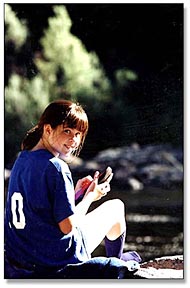 by highway and air, it has stores, schooling, medical facilities, and basic commodity needs of residents.
by highway and air, it has stores, schooling, medical facilities, and basic commodity needs of residents.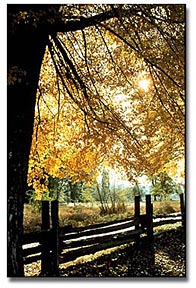 the upper 60’s and low 70’s. Nighttime temperatures drop into the 30’s as winter approaches. The wildflower display is over, and it is time for the trees to put on their magnificent display of fall color. The drive up the Klamath River Highway brings a new picture postcard into view at each turn of the road with colors ranging from brilliant yellow to deep magenta and purple, and small wisps of cloud hug the mountainsides, clinging to the deep green of the pine, fir and cedar. Fall rains become intermittent and more frequent as the season progresses.
the upper 60’s and low 70’s. Nighttime temperatures drop into the 30’s as winter approaches. The wildflower display is over, and it is time for the trees to put on their magnificent display of fall color. The drive up the Klamath River Highway brings a new picture postcard into view at each turn of the road with colors ranging from brilliant yellow to deep magenta and purple, and small wisps of cloud hug the mountainsides, clinging to the deep green of the pine, fir and cedar. Fall rains become intermittent and more frequent as the season progresses.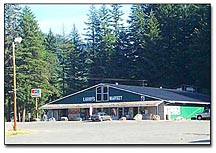 operate, or a credit account in town; a tire store, an auto parts store an auto/body paint shop, an auto repairgarage, a hardware store, a laundromat, a pharmacy, a mercantile offering a wide variety of goods, two restaurants, a hamburger stand, a video store, a liquor/sporting goods/arcade, a pizza place, an office supply store, a used furniture store, used book/clothing store, several beauty shops, varied guide services, motels/resorts/cabins, several RV Parks with full hookups, one lounge, a pet groomer, a gift/collectibles/antique store, a real estate agent, a car wash, a book publisher, a magazine publisher, a computer software business, two rock shops, a small-scale mining organization, a winery, a screen-printing business, horse/horseback riding and training, and numerous small cottage industries such as handcrafts, cake decorating, quilting and upholstering, gold nugget jewelry, Indian and/or silver and gemstone jewelry, weaving, mushroom growing, yard services, rafting services, woodcutting, and housecleaning.
operate, or a credit account in town; a tire store, an auto parts store an auto/body paint shop, an auto repairgarage, a hardware store, a laundromat, a pharmacy, a mercantile offering a wide variety of goods, two restaurants, a hamburger stand, a video store, a liquor/sporting goods/arcade, a pizza place, an office supply store, a used furniture store, used book/clothing store, several beauty shops, varied guide services, motels/resorts/cabins, several RV Parks with full hookups, one lounge, a pet groomer, a gift/collectibles/antique store, a real estate agent, a car wash, a book publisher, a magazine publisher, a computer software business, two rock shops, a small-scale mining organization, a winery, a screen-printing business, horse/horseback riding and training, and numerous small cottage industries such as handcrafts, cake decorating, quilting and upholstering, gold nugget jewelry, Indian and/or silver and gemstone jewelry, weaving, mushroom growing, yard services, rafting services, woodcutting, and housecleaning.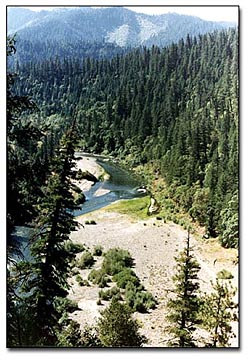 westerly, then southerly direction, entering a narrower canyon beyond the western edge of town. Due to small human population in the area, the river abounds in wildlife. California Black Bear, mountain lion, Pacific Fisher, elk, blacktail deer, otter, raccoons, skunks, fox, coyote, and steelhead and salmon fish are among those most often seen. Blue heron, ducks, geese, owls, hawks, osprey, and eagles are just some of the many birds frequently seen in and around the river.
westerly, then southerly direction, entering a narrower canyon beyond the western edge of town. Due to small human population in the area, the river abounds in wildlife. California Black Bear, mountain lion, Pacific Fisher, elk, blacktail deer, otter, raccoons, skunks, fox, coyote, and steelhead and salmon fish are among those most often seen. Blue heron, ducks, geese, owls, hawks, osprey, and eagles are just some of the many birds frequently seen in and around the river.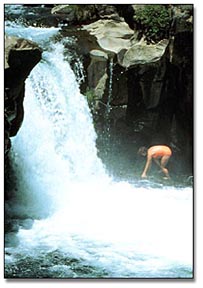 Rock-lined walks, in use for many, many years, lead you along the banks of the creek to wander under the trees. Sulphur Springs itself offers a warm, healing, sulphurous bath at the edge of Elk Creek, any time of year. Just above the campground is a lovely waterfall and grotto for swimming. This area was in use by the Karuk Indians, long before being settled by any white man. Just two miles above the campground the road is closed to motor vehicles, and this area, a former elk preserve is now rich in elk.
Rock-lined walks, in use for many, many years, lead you along the banks of the creek to wander under the trees. Sulphur Springs itself offers a warm, healing, sulphurous bath at the edge of Elk Creek, any time of year. Just above the campground is a lovely waterfall and grotto for swimming. This area was in use by the Karuk Indians, long before being settled by any white man. Just two miles above the campground the road is closed to motor vehicles, and this area, a former elk preserve is now rich in elk.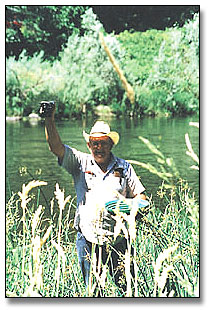
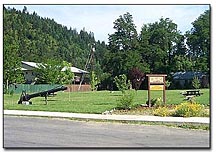 streetlights, long waiting lines, or a large populace, its setting among magnificent natural resources and the unhurried pace of life are just compensation for those who choose to live here. Here the air is sweeter; a unique microclimate allows residents to grow more varieties of plants than can be found most anywhere else; the natural beauty and serenity of the area are unmatched in the hurried pace of life that rushes past across the mountains in every direction, leaving this community to provide a unique opportunity to raise a family, live out your “golden years,” or have a unique vacation in “God’s country,” almost untouched by the rest of the world.
streetlights, long waiting lines, or a large populace, its setting among magnificent natural resources and the unhurried pace of life are just compensation for those who choose to live here. Here the air is sweeter; a unique microclimate allows residents to grow more varieties of plants than can be found most anywhere else; the natural beauty and serenity of the area are unmatched in the hurried pace of life that rushes past across the mountains in every direction, leaving this community to provide a unique opportunity to raise a family, live out your “golden years,” or have a unique vacation in “God’s country,” almost untouched by the rest of the world.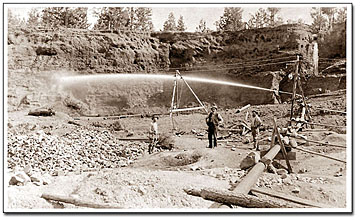 Local people tell of families who earned a living during the lean years of the depression by mining and, as recently as 1986, an active local major gold mine, the Noranda mine, closed after producing hundreds of thousands of ounces of gold. In the last few years, small-scale gold prospecting has increased in the area, as people travel from all over the world to seek Happy Camp’s rich gold deposits.
Local people tell of families who earned a living during the lean years of the depression by mining and, as recently as 1986, an active local major gold mine, the Noranda mine, closed after producing hundreds of thousands of ounces of gold. In the last few years, small-scale gold prospecting has increased in the area, as people travel from all over the world to seek Happy Camp’s rich gold deposits.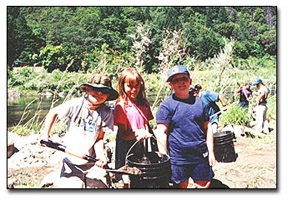 For those interested in small-scale gold prospecting and mining, this secluded setting is perfect. Not as close or accessible as mining areas in the Mother Lode, this area has not been as heavily worked. It is also an area where gold deposits are laid down in flood times in the many gravel bars, in layers—sometimes in a layer only a foot, or 18 inches below the surface of the material. Many of these gold deposits are very accessible, and have proven to be quite rewarding for people working with gold pans, sluices and motorized sluicing gear. These types of mining, besides dredging, are done all along the Klamath River from I-5 to many miles below the town of Happy Camp.
For those interested in small-scale gold prospecting and mining, this secluded setting is perfect. Not as close or accessible as mining areas in the Mother Lode, this area has not been as heavily worked. It is also an area where gold deposits are laid down in flood times in the many gravel bars, in layers—sometimes in a layer only a foot, or 18 inches below the surface of the material. Many of these gold deposits are very accessible, and have proven to be quite rewarding for people working with gold pans, sluices and motorized sluicing gear. These types of mining, besides dredging, are done all along the Klamath River from I-5 to many miles below the town of Happy Camp.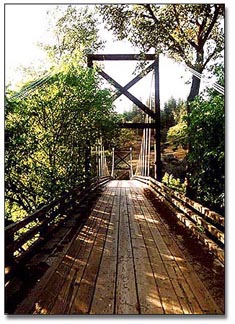 prospecting; or hunting for gold nuggets with a metal detector. Recent advances made in nugget detectors, which allow them to function more efficiently in heavily mineralized soil, have opened up an entirely new dimension for exploration.
prospecting; or hunting for gold nuggets with a metal detector. Recent advances made in nugget detectors, which allow them to function more efficiently in heavily mineralized soil, have opened up an entirely new dimension for exploration.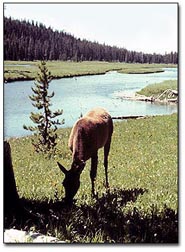 Happy Camp is not a glitzy, tourist trap town by any means. There are people here who actually make a living by mining for gold.
Happy Camp is not a glitzy, tourist trap town by any means. There are people here who actually make a living by mining for gold.
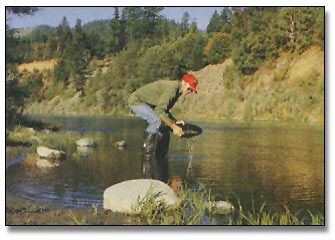 to make a gold prospecting trip to northern California. I also wanted to visit with my father while we were there. He is now in his 80’s, but acts like he thinks he’s still a teenager.
to make a gold prospecting trip to northern California. I also wanted to visit with my father while we were there. He is now in his 80’s, but acts like he thinks he’s still a teenager.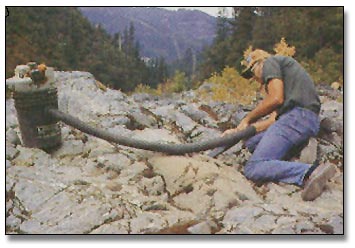 loaned us his MACK-VACK to use while we were there! The MACK-VACK is a vacuum type tool for sucking dirt and gold out of cracks and crevices and into a five-gallon bucket. It proved to be very effective and we used it to good advantage in several locations. After showing us around and pointing out a few spots he thought should be productive, Bill wished us luck and went on his way.
loaned us his MACK-VACK to use while we were there! The MACK-VACK is a vacuum type tool for sucking dirt and gold out of cracks and crevices and into a five-gallon bucket. It proved to be very effective and we used it to good advantage in several locations. After showing us around and pointing out a few spots he thought should be productive, Bill wished us luck and went on his way.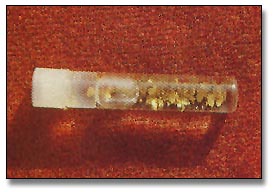 feelings of those early pioneers and miners. Now, crossing the empty deserts of Nevada, almost totally exhausted, I was at least partially successful. It didn’t matter that we were traveling at 65 miles an hour. The horizons were so distant there was no perception of getting anywhere. We had somehow become caught in a realm where time was meaningless and the vastness of the land too great to comprehend. The chances of us ever reaching our homes began to seem hopeless.
feelings of those early pioneers and miners. Now, crossing the empty deserts of Nevada, almost totally exhausted, I was at least partially successful. It didn’t matter that we were traveling at 65 miles an hour. The horizons were so distant there was no perception of getting anywhere. We had somehow become caught in a realm where time was meaningless and the vastness of the land too great to comprehend. The chances of us ever reaching our homes began to seem hopeless.
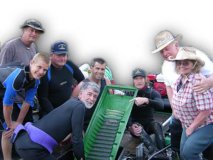
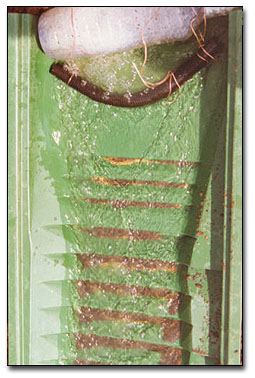 Sluice. It was never more than a half of one percent of our total gold recovery.
Sluice. It was never more than a half of one percent of our total gold recovery.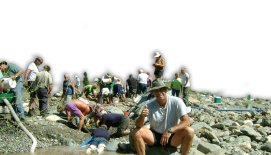
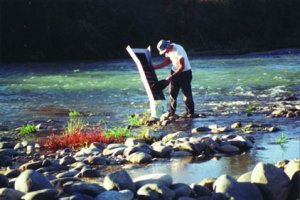 A “sluice box” is a trough-like gold recovering device which has a series of obstructions or baffles, called “riffles”, along its bottom edge. While a steady stream of water is directed to pass through, streambed material is shoveled into the upper-end of the box. The flow of water washes the streambed materials through the sluice and over the riffles, which trap the gold out of the material.
A “sluice box” is a trough-like gold recovering device which has a series of obstructions or baffles, called “riffles”, along its bottom edge. While a steady stream of water is directed to pass through, streambed material is shoveled into the upper-end of the box. The flow of water washes the streambed materials through the sluice and over the riffles, which trap the gold out of the material.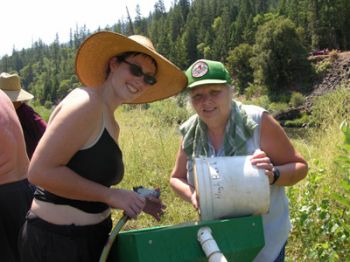 Motorized sluices are usually equipped with a recovery system that is set up with adjustable-length legs. This allows the box to be adjusted from side to side and front to back on uneven ground. This allows the water flow to be created for optimum gold recovery. Most motorized sluices available on today’s market also include a
Motorized sluices are usually equipped with a recovery system that is set up with adjustable-length legs. This allows the box to be adjusted from side to side and front to back on uneven ground. This allows the water flow to be created for optimum gold recovery. Most motorized sluices available on today’s market also include a 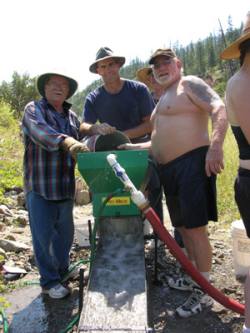 Another advantage to the motorized sluice is that in some areas today, it is not legal to wash silt directly from the bank into an active waterway. With a motorized sluice set up some distance from the stream or river, you have an opportunity to utilize natural contours up on the land to slow the water down enough to allow the sediments to settle before (if ever) the water re-enters the creek or river.
Another advantage to the motorized sluice is that in some areas today, it is not legal to wash silt directly from the bank into an active waterway. With a motorized sluice set up some distance from the stream or river, you have an opportunity to utilize natural contours up on the land to slow the water down enough to allow the sediments to settle before (if ever) the water re-enters the creek or river.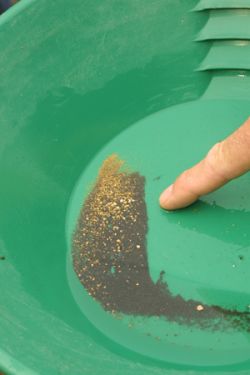 It is estimated that as much as 50-percent of the gold washed right through the sluice boxes in hydraulic operations because of the large volume and velocity of water which such operations used. Hydraulic operations did not lose gold in the same amounts all of the time. Much of the gravel that these operations processed contained little or no gold. The concentrations of gold were found along bedrock or at the bottom of
It is estimated that as much as 50-percent of the gold washed right through the sluice boxes in hydraulic operations because of the large volume and velocity of water which such operations used. Hydraulic operations did not lose gold in the same amounts all of the time. Much of the gravel that these operations processed contained little or no gold. The concentrations of gold were found along bedrock or at the bottom of 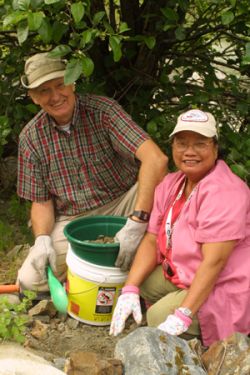 Finding pay-streaks with a surface digging project is usually done by setting up the sluice in several different locations, and giving each sample a large enough test hole to obtain an idea of how much gold the gravel is carrying. Sample holes should be taken to bedrock if possible. However, if the gravel goes deep, you have to avoid getting in too far “over your head.” At the point where you start digging deeper than 3 or 4 feet with a pick and shovel, any pay-streak is going to have to be exceptionally rich to make the effort worthwhile. Richer deposits are more scarce; and therefore more difficult to find. So it is important to stay within effective digging/sampling range, and not get yourself into a full-scale production operation before you have found a high-grade gold deposit.
Finding pay-streaks with a surface digging project is usually done by setting up the sluice in several different locations, and giving each sample a large enough test hole to obtain an idea of how much gold the gravel is carrying. Sample holes should be taken to bedrock if possible. However, if the gravel goes deep, you have to avoid getting in too far “over your head.” At the point where you start digging deeper than 3 or 4 feet with a pick and shovel, any pay-streak is going to have to be exceptionally rich to make the effort worthwhile. Richer deposits are more scarce; and therefore more difficult to find. So it is important to stay within effective digging/sampling range, and not get yourself into a full-scale production operation before you have found a high-grade gold deposit.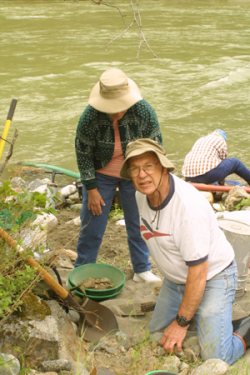 One mistake that beginners often make is in thinking that the recovery system is at fault because they are not recovering very much gold. Most often, however, it is not the recovery system. It is the lack of a good-paying pay-streak! The answer to this is to hustle around with more sampling. Ask around to see what and where it is working well for others in the area. Use their operations as a model.
One mistake that beginners often make is in thinking that the recovery system is at fault because they are not recovering very much gold. Most often, however, it is not the recovery system. It is the lack of a good-paying pay-streak! The answer to this is to hustle around with more sampling. Ask around to see what and where it is working well for others in the area. Use their operations as a model.

